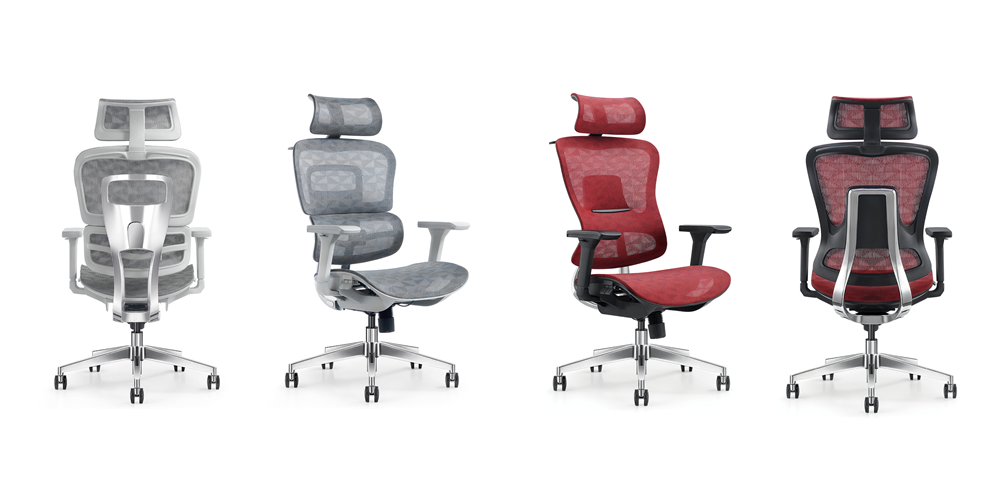Blogs
Understanding the Distinction Between Ergonomic Desk Chairs and Common Office Chairs

In the pursuit of creating a workspace that fosters both comfort and productivity, the choice of seating becomes paramount. As the hours spent seated at a desk accumulate, the importance of selecting chairs that prioritize well-being, support, and efficiency cannot be overstated. Two primary contenders in the realm of office seating are ergonomic desk chairs and common office chairs. While they may share certain similarities, a closer examination reveals substantial differences in terms of design, functionality, and the benefits they offer.
In this comprehensive guide, we will delve into the nuanced characteristics of ergonomic desk chairs and common office chairs, aiding you in making an informed decision about the optimal seating solution for your specific needs. Whether you're a professional aiming to maintain comfort during extended work sessions or a decision-maker seeking the right chairs for your office environment, this article will equip you with the insights necessary to make a well-founded choice.
1. Defining ergonomic desk chairs and Common Office Chairs
ergonomic desk chairs are meticulously engineered to provide exceptional levels of comfort, support, and posture alignment for individuals engaged in prolonged desk work. These chairs are tailored to encourage healthy sitting habits and mitigate the risks associated with extended periods of seated work. Their design incorporates specialized ergonomic features and customizable adjustments, ensuring a personalized sitting experience. Key features often found in ergonomic desk chairs encompass:
Adjustable Seat Height: Enabling users to align their feet with the floor or rest them comfortably on a footrest.
Adjustable Seat Depth: Allowing customization to provide proper thigh support and prevent discomfort behind the knees.
Lumbar Support: Maintaining the natural curvature of the spine to provide adequate support to the lower back.
Adjustable Armrests: Customizable arm support to alleviate strain on the shoulders and neck.
Swivel and Mobility: Facilitating effortless rotation and access to different work areas.
Breathable and Comfortable Upholstery: Utilizing materials that enhance comfort and prevent overheating during extended periods of sitting.
Conversely, common office chairs serve as conventional seating options in office settings. These chairs are designed to provide functional seating at desks or workstations across various professional contexts, including offices, conference rooms, and cubicles. Their design prioritizes practical seating solutions, often without the incorporation of advanced ergonomic features or sophisticated adjustments.
2. Distinct Design Philosophies
ergonomic desk chairs place a premium on delivering optimal comfort, support, and the cultivation of healthy sitting postures. Their design is centered around enhancing the user's overall well-being during prolonged desk-bound work. In contrast, common office chairs emphasize simplicity, functionality, affordability, and versatility. While lacking the advanced ergonomic features of their counterparts, common office chairs offer a fundamental seating solution for general office tasks and shorter durations of sitting.
3. Target Users and Applications
ergonomic desk chairs are especially well-suited for individuals engaged in extended periods of desk work. Professionals with desk-based roles, remote workers, and those seeking to minimize discomfort associated with prolonged sitting can greatly benefit from their ergonomic design.
Common office chairs find their utility in conference rooms, reception areas, shared workspaces, and other settings that prioritize flexibility and practical seating solutions. These chairs cater to individuals participating in brief meetings, quick tasks, or collaborative work environments.
4. Pricing Considerations
ergonomic desk chairs, equipped with advanced features and customizable mechanisms, generally come at a higher price point due to their specialized design and emphasis on ergonomic support. Conversely, common office chairs are tailored to be budget-friendly, making them accessible options for a range of office environments.
5. Material Composition
ergonomic desk chairs commonly feature high-quality upholstery, supportive padding, durable frames, and premium components. In contrast, common office chairs rely on standard upholstery materials, moderate padding, basic frames, and standard components to offer an economical seating solution.
In Conclusion: Making the Right Chair Choice
The decision between ergonomic desk chairs and common office chairs hinges on individual preferences, work habits, and specific seating requirements. Ergonomic desk chairs excel in delivering personalized comfort and support for extended periods, making them a wise investment for those committed to maintaining well-being during prolonged desk work. Meanwhile, common office chairs function as pragmatic solutions for shorter periods of sitting and general office tasks, rendering them suitable for shared spaces and brief meetings.
Ultimately, the choice you make should align with your distinct needs and contribute to a workspace that enhances comfort, productivity, and overall health. By selecting the appropriate chair, you create an environment that fosters your well-being and facilitates peak perform
RELATED NEWS
- How do I choose the stylish and comfortable ergonomic office chairs? 2023-07-11
- What is the best office chair for working long hours? 2023-07-11
- How to Design Ergonomic Office Chairs: Insights from Manufacturers 2023-07-10
- The Value of BIFMA Certification: Choosing an Ergonomic Office Chair 2023-07-10
- Are Expensive Office Chairs Really Worth It ? A Comprehensive Analysis 2023-07-07
Categories
Latest News
Contact Us
Contact: Scarlett
Phone: 18029330671
E-mail: scarlett@visionchairs.com
Whatsapp:8618029330671
Add: No.16 shafu Road, Long Jiang town,Shunde, Foshan City